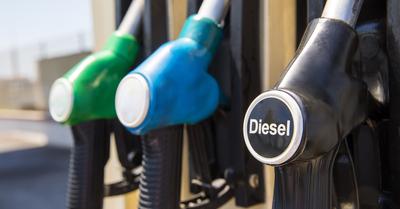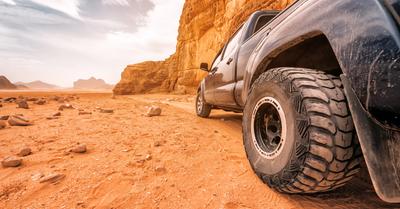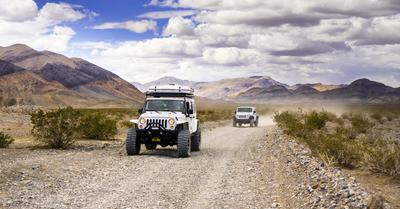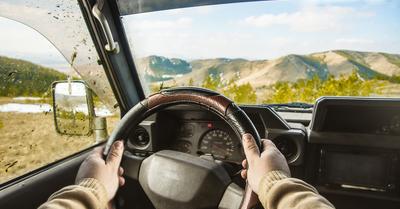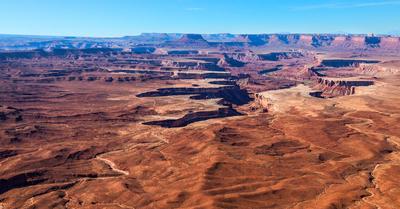Off-roading can cause harm to the environment, but most causes of pollution and damage are preventable by responsible drivers.
The main effects of off-roading are soil damage from erosion, chemical pollution, vegetation loss, forest and brush fires, and garbage pollution from accidental and intentional dumping.
In this article, we’ll cover seven of the most common effects of off-roading on the trail and the surrounding environment. Additionally, we’ll go over some easy ways to prevent and restore environmental damage and improve your local off-roading trails.
We sourced this information from off-road enthusiasts, conservation groups, and the Texas Parks and Wildlife Department.
This article may contain affiliate links where we earn a commission from qualifying purchases.
How do Off-Road Activities Affect the Environment?
Off-roading doesn’t have to be a scourge on the environment, but it often is. This is largely due to the irresponsible use of off-road trails and bad trail management.
So how does off-roading affect the environment, and what are the consequences of bad off-roading behavior? We’ll cover that next.
1. Off-Roading Trail Damage
The most common effect off-roading has on the environment is trail damage and erosion. This is largely impossible to prevent, and it’s just one of those things we have to deal with. But how ecologically harmful is it, and what can be done to reduce it?
Trail damage isn’t that big of a deal in many places, especially if the trail is otherwise well maintained. It becomes a bigger issue in environments with lots of trees or weak soils.
Trail damage can harm the roots of nearby trees, and compacted trails can cause muddy runoff that pollutes rivers and streams. Trail damage can also cause harm to off-roaders, especially if erosion leads to rockslides and other catastrophic road failures.
2. Destruction of Vegetation
Off-roading affects vegetation in many ways. The first and most obvious detriment occurs when off-roaders run over plants and saplings. Tree saplings are particularly vulnerable—and ecologically valuable.
Eventually, a small sapling will become an enormous tree if it survives long enough. A single truck can wipe out a generation of future trees, which will lead to everything from soil erosion and bird habitat loss.
That’s why it’s such a big deal when a forest ranger catches you damaging trees and saplings.
Vehicle exhaust can also harm sensitive vegetation, as fumes are toxic to many species of plants. Years of soot from the automotive exhaust can taint the water the plants need to survive and poison them.
3. Chemical Pollution
Chemical pollution is another concern, and it doesn’t take much of it to cause a major environmental effect. The most common chemical pollutants are oil from leaking engines, transmission fluid, sooty exhaust condensation, brake fluid, and coolant.
Fuel spills, while relatively uncommon, are a cause for concern. Fuel leaks from gas tanks at aggressive angles, but more often leaks from jerry cans and improper containers. These also pose a fire hazard.
Coolant is one of the more insidious chemical pollution sources. People perceive that it’s safe to dump because it leaks out so often (especially after overheating) and that a large part of it is water.
Coolant is a poison that’s fatal to mammals when swallowed, and it also has a sweet taste—which makes it attractive to wildlife. It doesn’t evaporate as water does, and it persists in the environment for a very long time.
But gallon for gallon, oil is the worst polluter of them all. Oil never decomposes. If it gets into the soil, it stays there—until it is washed out into local streams and rivers. Oil is toxic, and a single quart can contaminate thousands of gallons of water.
Other fluids, which don’t leak as often, are less concerning. And luckily, it’s easy to prevent this kind of pollution. If your vehicle is in good order, well-maintained, and driven carefully, you can prevent almost all spills and leakages.
4. Groundwater Pollution
So, where do all those chemicals go once they get into the dirt? They can be washed into rivers and streams, or they can permeate the soil and enter the groundwater.
Earth’s soil and rock layers are spectacular filters. That’s why well water is free of the viruses, bacteria, and parasites found in surface water. But the earth can’t rid the water of petrochemicals as easily, which is why just a bit of leakage can contaminate a lot of groundwater.
This affects local homes and farmers and can persist in the environment for decades.
5. Toxic Dust and Debris
Brake dust is another source of pollution that occurs when vehicles go off-road. Brake dust, which contains fine particles and sometimes asbestos, doesn’t immediately harm the environment. Instead, this effect is cumulative and becomes part of the local dust over years of heavy use.
Dust and tire debris isn’t a huge environmental hazard of off-roading, but it is one to consider. Most of the ecological harm caused by brake dust and road debris comes from highways—especially in the desert.
6. Forest and Brush Fires
Off-roading itself doesn’t cause fires. But the vehicles can, and the activities often do as well. The most common cause of fires on roadsides is cigarette butts, which careless drivers flick out the window into dry brush.
Vehicle exhaust systems, particularly catalytic converters, can easily get hot enough to ignite dry brush. Other kinds of exhaust systems are less likely to start fires, but they still can. Backfires are a possible fire starter as well.
7. Garbage and Dumping
Dumping isn’t a result of off-roading itself, but it’s a common sight on the side of off-road trails around the country. What could be worse for the environment than dumping garbage directly into wildlands? Not much—and it’s the responsibility of off-roaders not to soil the land they love in such a careless way.
Dumping is easy to prevent. Just leave the area cleaner than you found it, and bring some garbage bags for your trash. Additionally, don’t leave cans or wrappers in the bed of your truck before hitting the trail because they could fly out and pollute the area.
How to Prevent the Negative Effects of Off-Roading
It’s really easy to prevent the majority of the environmental damage caused by off-roading. First, make sure your vehicle doesn’t leak and don’t drive around with unsafe fuel containers. Avoid dry grass if possible, and don’t throw anything out the window that can cause a fire.
Pick up your trash, and it doesn’t hurt to clean up after others too. We all share these trails, and everyone benefits from just a little beautification effort. Also, tie-down your stuff before hitting the trail.
Finally, stay on the trail and don’t carve out a new path. Doing so can harm vegetation, start fires, and damage your vehicle if you don’t know where you’re going. Respect the trail, and the trail will last for future generations to enjoy.



